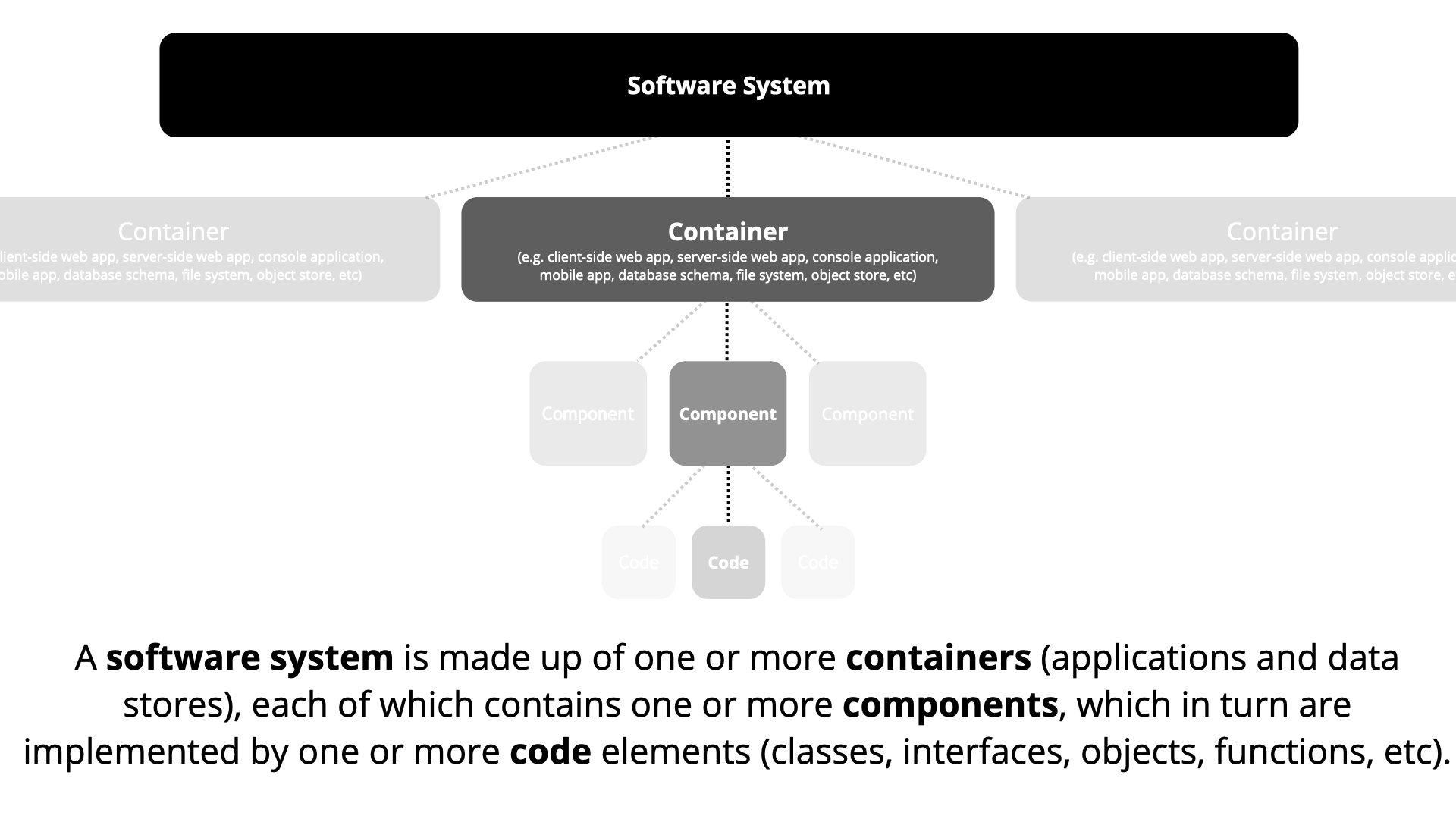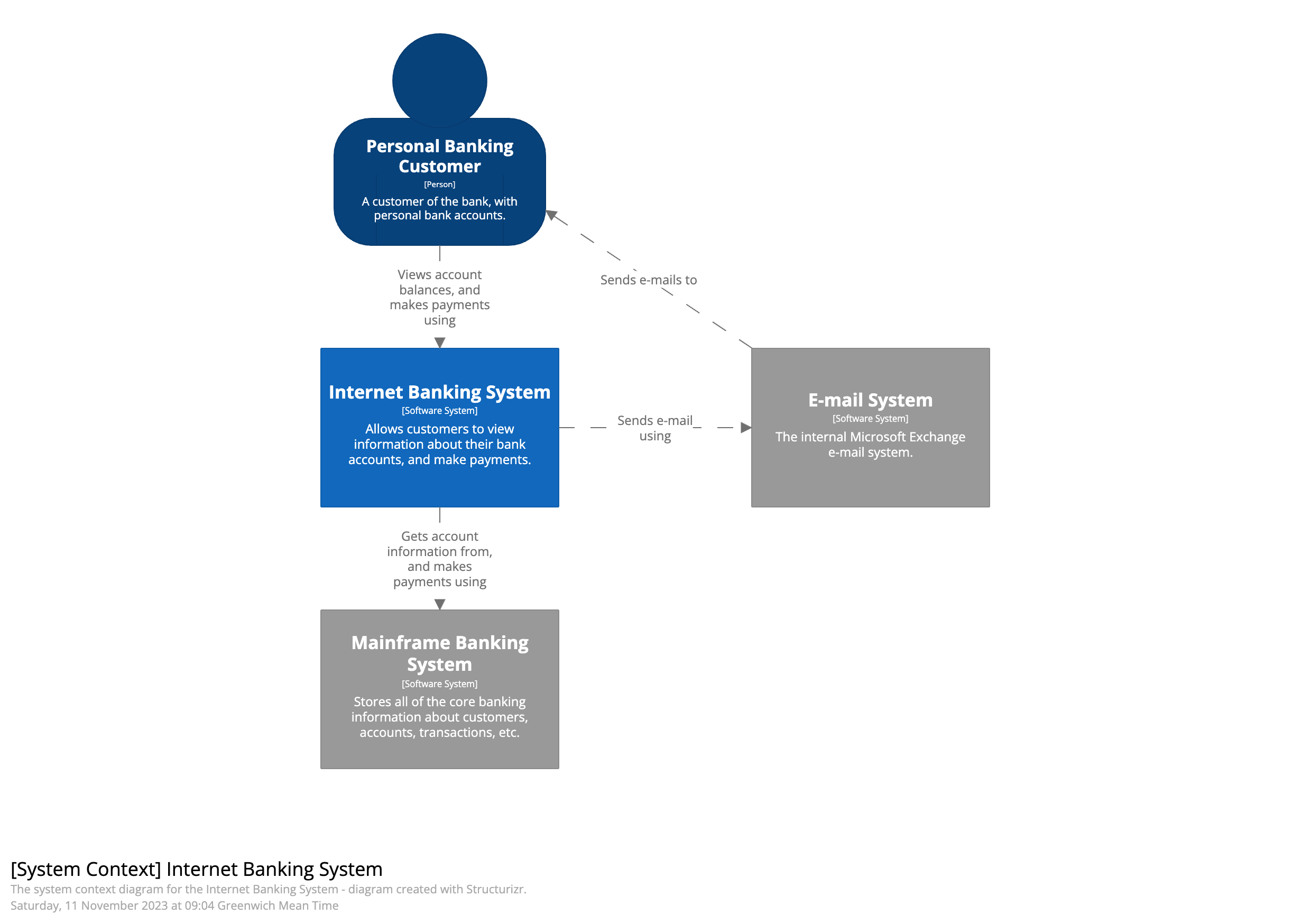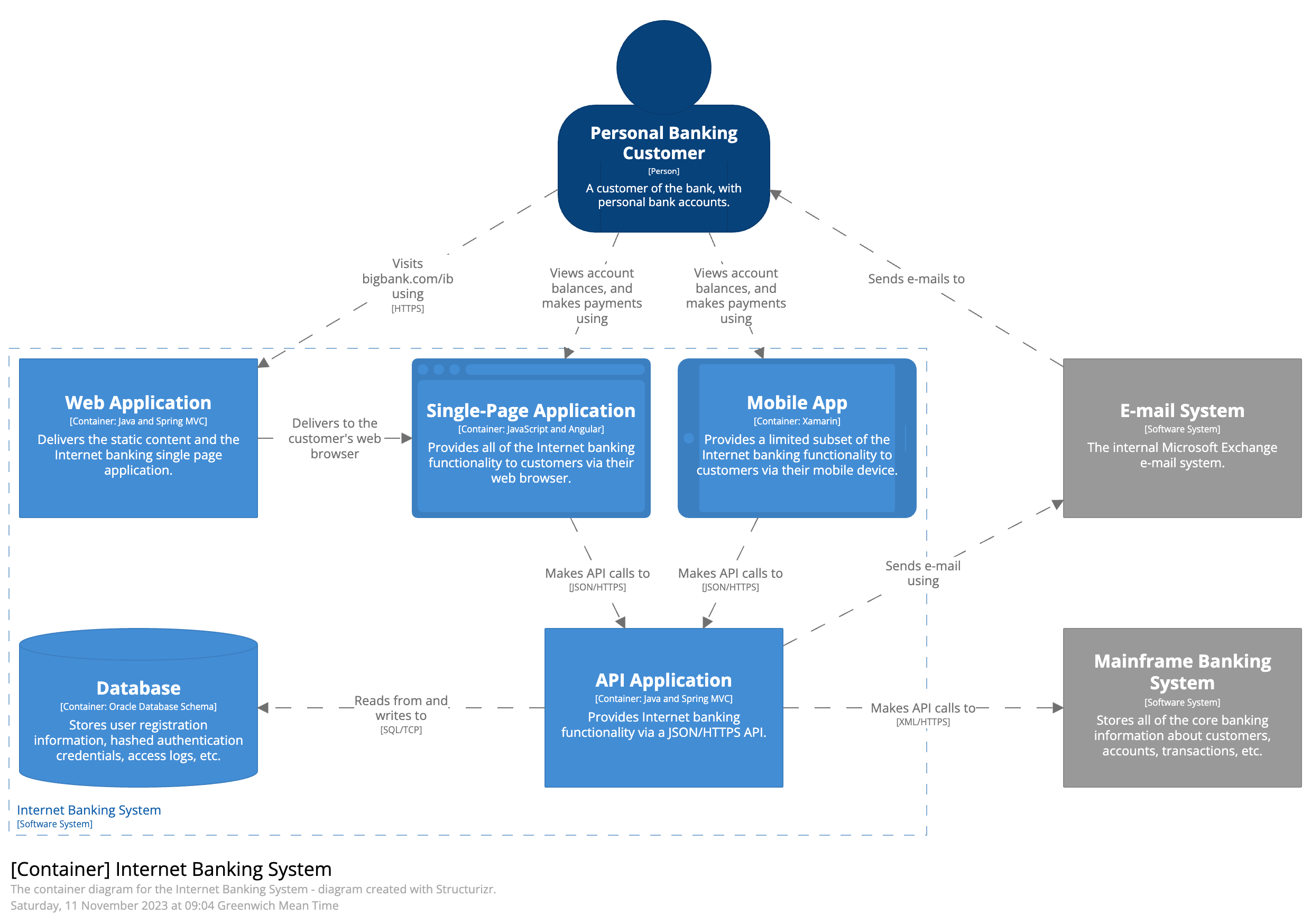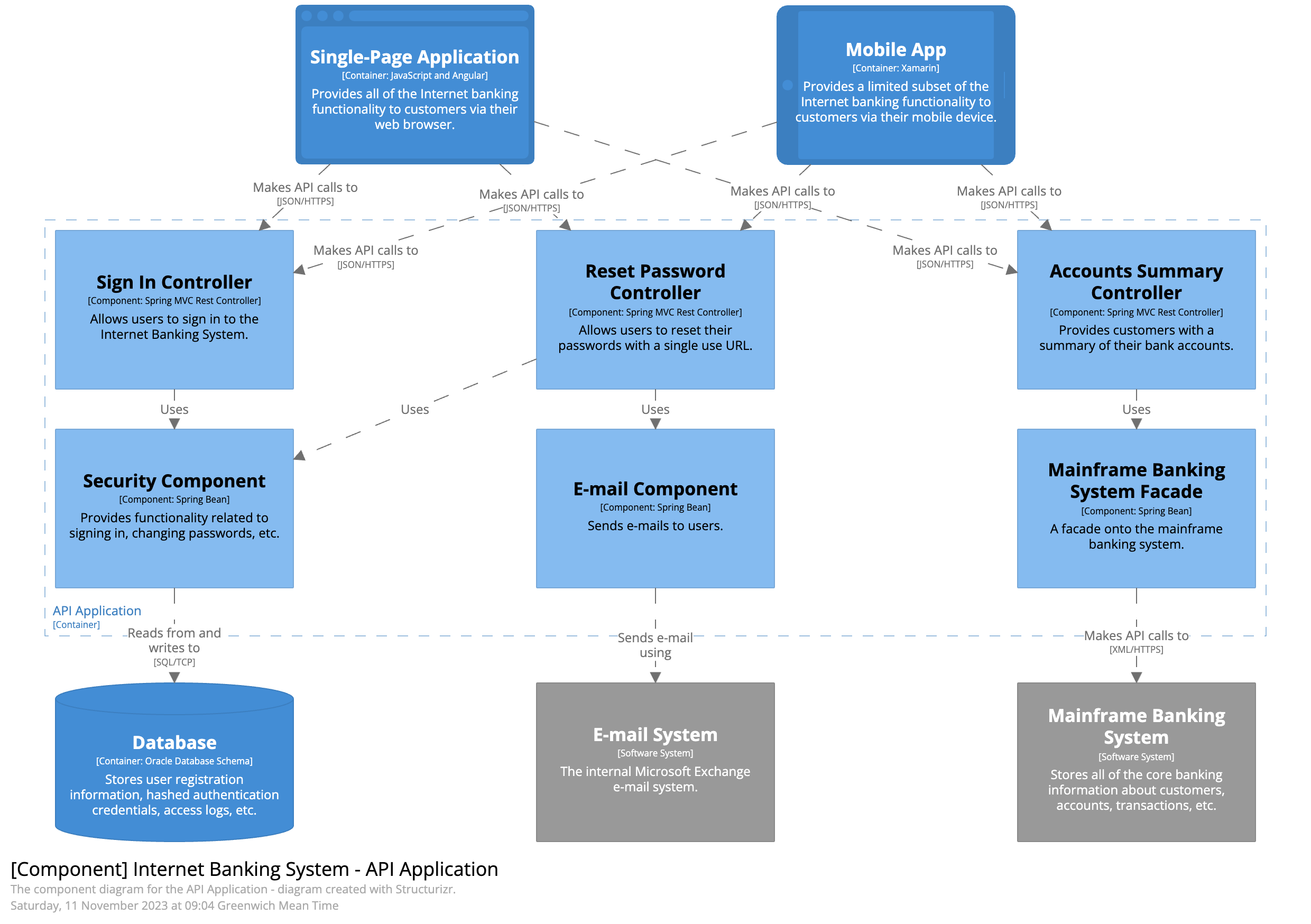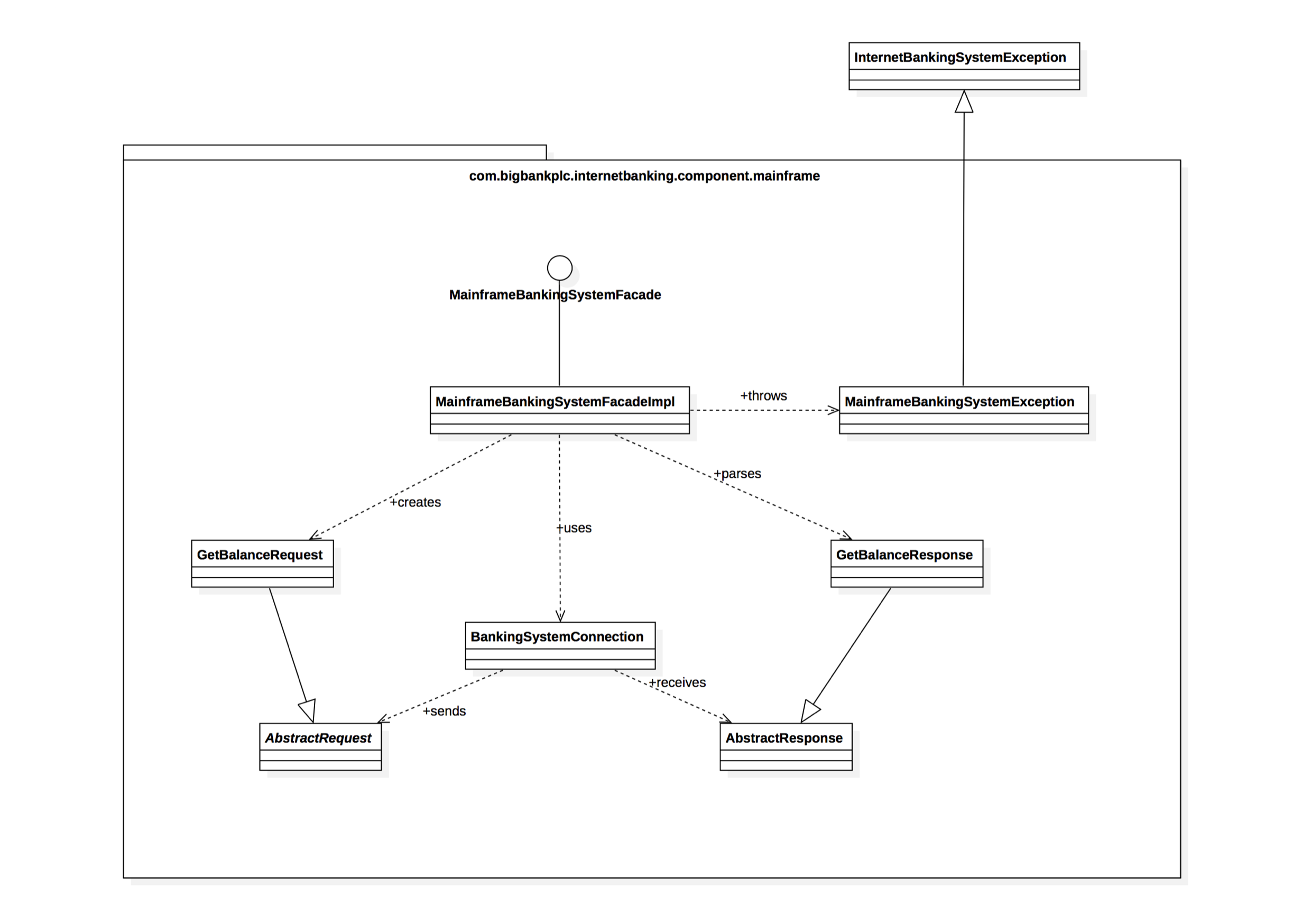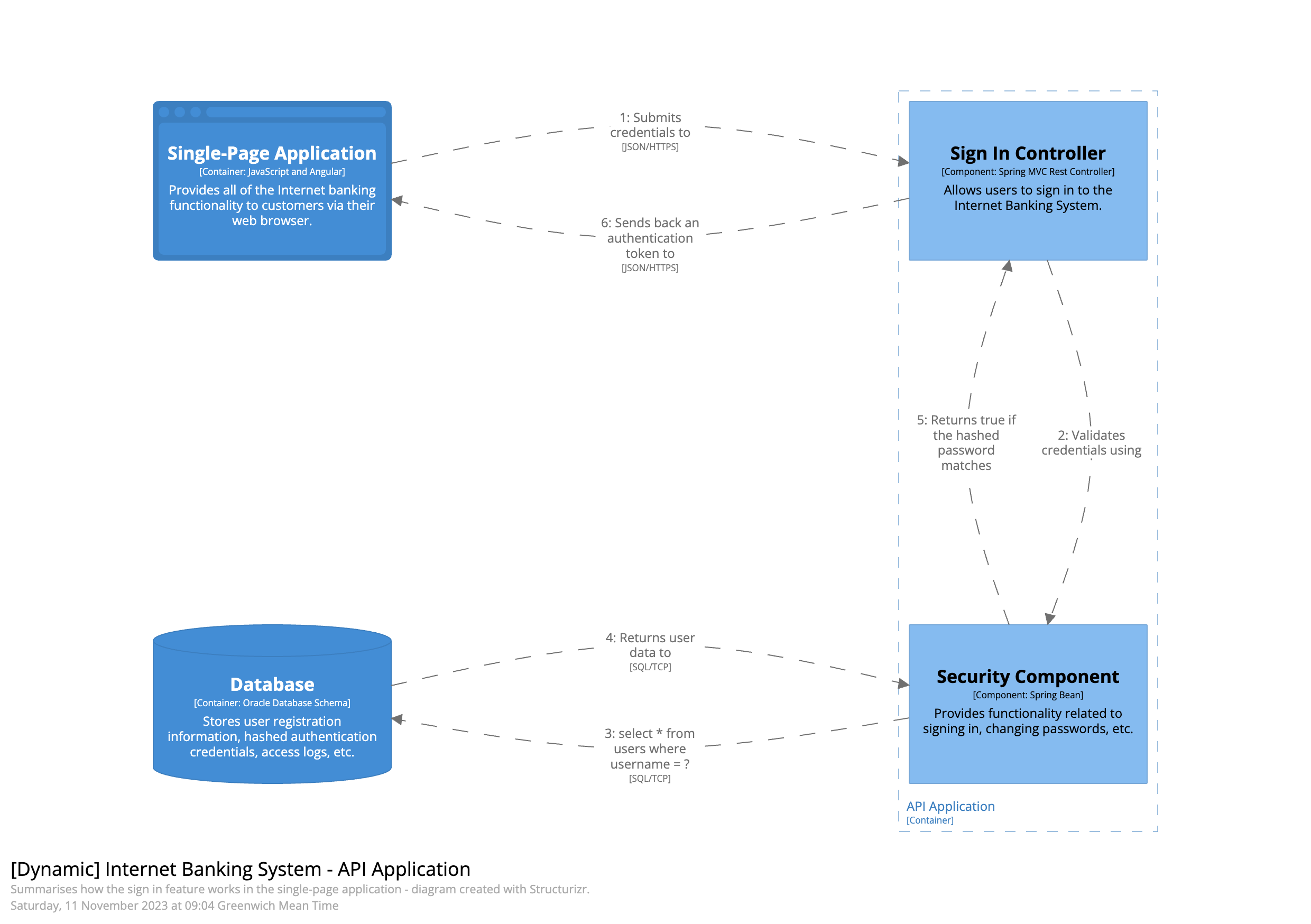C4 Model
This article provides an overview of the C4 Model as an Architectural Framework.
The C4 model is a hierarchical framework designed for visualizing the architecture of software systems. It emphasizes clarity and simplicity, making it accessible for technical and non-technical stakeholders. The framework consists of diagram types representing different levels of abstraction, enabling users to effectively convey a system’s architecture. It is tool-agnostic, allowing various tools to create the diagrams.
One of the significant benefits of the C4 model is its “zoom-in” approach, allowing stakeholders to navigate from high-level diagrams to more detailed ones. For example, an element depicted in the context diagram can be further elaborated in a container diagram, and each container can be broken down into its components in subsequent diagrams. This hierarchical representation facilitates a deeper understanding of each element and ensures that each diagram serves a specific purpose while contributing to the overall narrative of the system architecture.
Abstractions
The framework defines elements of an architecture as a set of hierarchical building blocks, namely:
- Software system, the highest level of abstraction, bringing value to the end user.
- Container - runtime boundary around an executable code or data storage, e.g., web application, database, etc.
- Component - a grouping of related functionality that is not separately deployable.
- Code - lowest abstraction level, representing classes, functions, and other entities from the programming language.
Each building block is composed of smaller blocks.
Default Diagrams
The framework defines four basic diagram types corresponding to the abstractions defined above. The diagrams are nested, which helps tackle the system’s complexity.
Context Diagram
This diagram provides a high-level overview of the system and its interactions with external entities. It sets the stage for understanding how the system fits into its broader environment.
Container Diagram
It breaks down the system into its containers, illustrating relationships between them. This level of detail allows stakeholders to see how different parts of the system interact.
Component Diagram
It offers a detailed view of the components within a specific container and their interactions. This helps understand the container’s internal structure and how components collaborate to fulfill system requirements.
Code Diagram
This diagram focuses on the implementation level, typically showing classes or modules within a component. It is particularly useful for developers to grasp the details of the code structure.
Adapting to Real World Use cases
The default diagrams create a foundation for describing the software system’s structure. However, some adjustments are needed to address different aspects of the architecture. For the most popular use cases, the C4 Model defines additional diagrams.
System Landscape Diagram
The System Landscape diagram extends the C4 Model by representing the broader ecosystem of interconnected systems. Unlike the Context diagram, which focuses on a single system and its external interactions, it captures multiple systems across a portfolio, their relationships, and the high-level data flows between them, providing a broader organizational perspective.
Dynamic Diagram
The Dynamic diagram illustrates the runtime behavior of the system by detailing the interactions and sequence of events between components. Unlike the static structure of Container and Component diagrams, this diagram emphasizes how elements collaborate during specific use cases or processes, making it helpful in understanding workflows and runtime scenarios.
Deployment Diagram
The Deployment diagram adds a physical perspective to the C4 Model by showing how software elements are deployed across hardware or infrastructure nodes. Unlike the Container and Component diagrams, which describe the logical architecture, the Deployment diagram provides details about environments, servers, containers, and their connections, highlighting the operational aspect of the system.
Recommended Reading
Articles
- Brown, S. “Introduction to C4 Model”. Detailed description of the C4 architecture framework.
Books
- Simon Brown. “The C4 model for visualizing software architecture”.
Guide to communicating software architecture using the C4 model—a pragmatic visual framework covering context, containers, components, and code .
